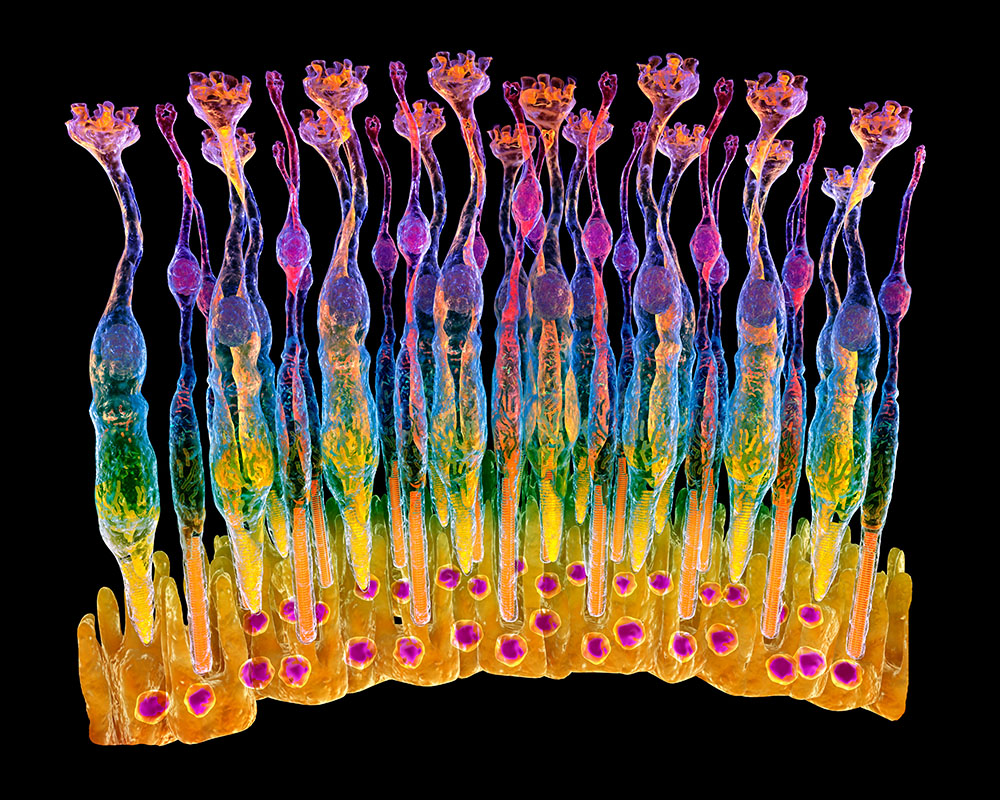Tunable contacts can help correct color blindness
Scientists use sensitive dye to filter out the wavelengths of light that lead people to confuse red and green
Red-green color blindness affects around 300 million people across the world, leaving them unable to distinguish these commonly occurring colors. This has an impact on various aspects of their lives, from career choices to whether or not they are allowed to drive.
Researchers at Khalifa University have developed a possible solution to this condition: color-filtering contact lenses that can be tuned to address individual needs.
“Each patient has a different color blindness type and severity. With a tunable lens, we can proportion the filtering properties of each lens and meet a patient’s needs,” says Haider Butt, a professor at the university’s Department of Mechanical & Nuclear Engineering who works on the project.
The retina of the eye has three types of photoreceptor cone cells, which are usually triggered by the specific wavelengths of blue, green and red light. In red-green color blindness, the photoreceptors responsible for detecting green light don’t work properly and mistakenly respond to red light.
“Each patient has a different color blindness type and severity. With a tunable lens, we can proportion the filtering properties of each lens and meet a patient’s needs.”
Haider Butt
To correct this, the team developed special contact lenses that contain a common dye called neutral red. This dye filters out certain wavelengths of light, in this case those that fall between green and red in the natural spectrum, making it easier for people with color blindness to tell them apart.
Building on previous attempts to help patients with the condition by filtering light, Butt and his team were able to tune the lenses to block specific wavelengths. To do this they used different pH solutions to tweak the light-absorbing properties of the dye particles. This allows lenses to be individually matched using 3D printing, to help block the exact wavelengths of light that contribute to an individual’s color blindness.
“Tests have shown promising results, with the special lenses able to match the performance of corrective glasses already available for color-blind people,” says Butt. The team has obtained several patents.
“The lenses improve the distinction between red and green color for some patients and help them pass the Ishihara tests,” Butt explains. These classic tests, developed more than a century ago by the Japanese ophthalmologist Shinobu Ishihara, use a series of pictures made up of colored dots to check vision.
The KU team has set up a company called Vision Emirates and is currently looking for funds to help develop the new technology.
Reference
Sakr, A., Salih, A., Hisham, M., Elsherif, M., Schiffer, A., & Butt, H. Multifunctional and multimaterial contact lenses: tailored solutions for tunable color filtering and tear pH sensing. Virtual and Physical Prototyping 19(1), 2023.




